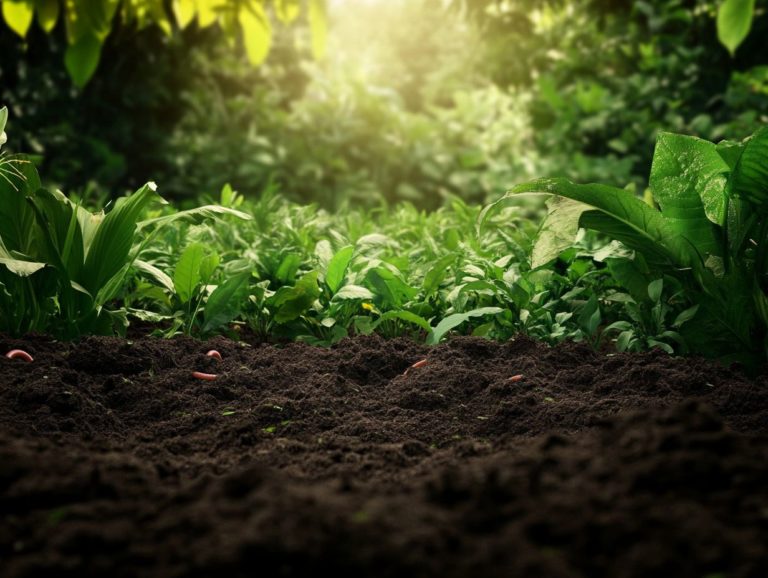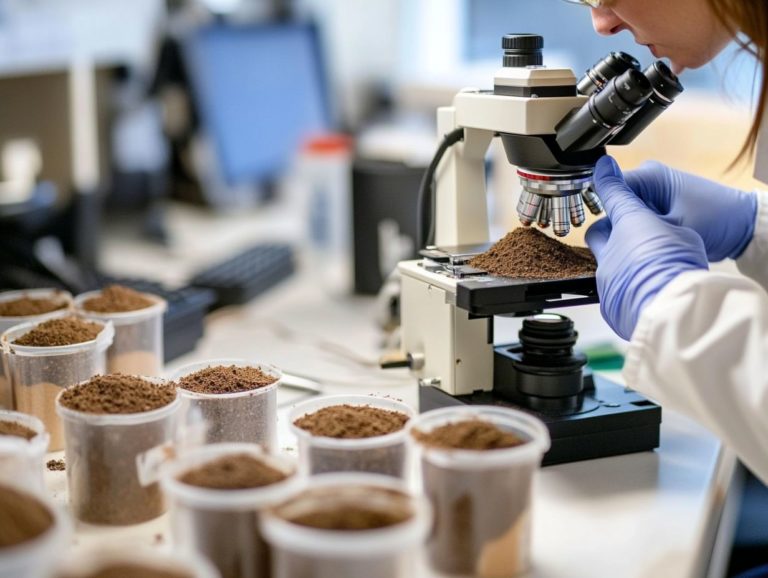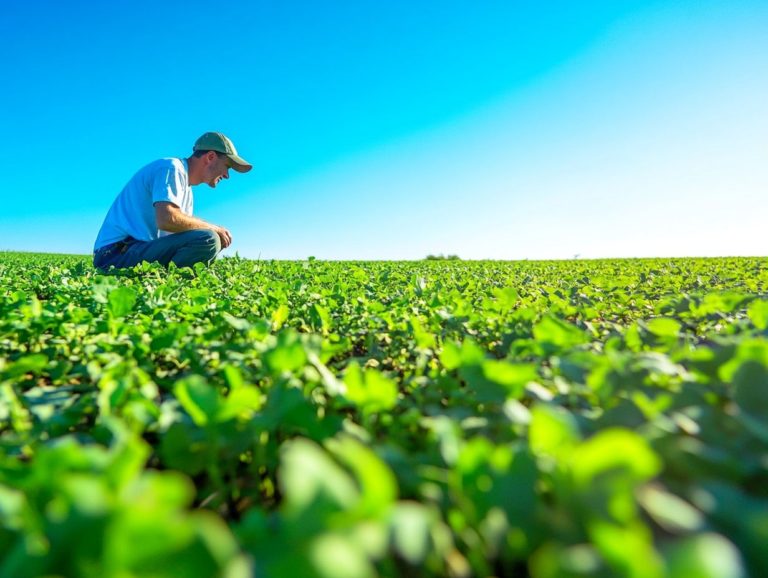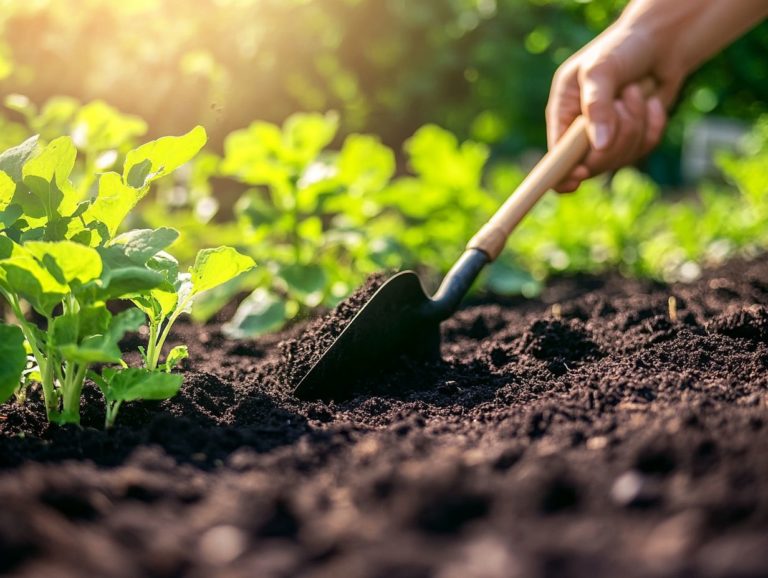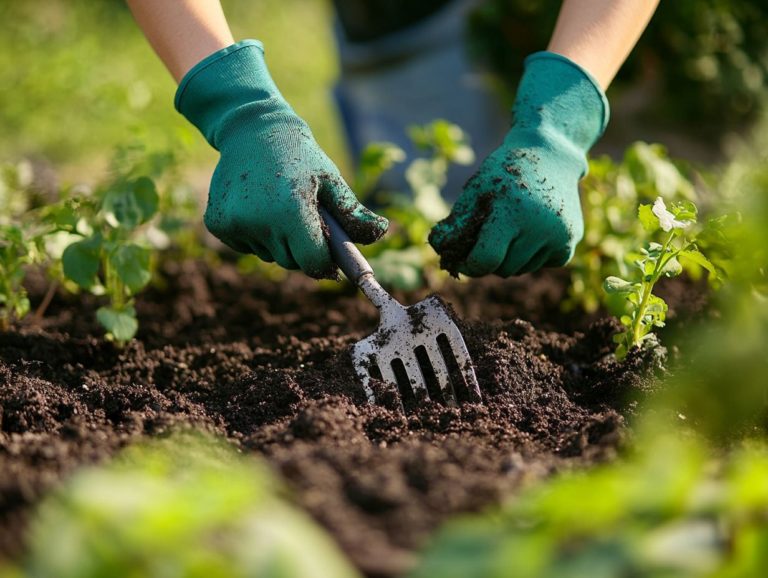The Impact of Soil Compaction on Plants
Soil compaction is a subtle yet formidable threat that can greatly impact plant health and agricultural productivity.
As you delve into the definition and causes of soil compaction, you’ll discover how it stifles root growth, diminishes nutrient uptake, and disrupts water absorption. Recognizing and measuring compaction is essential for effective management. You ll find valuable insights on best practices and remediation techniques to tackle this issue head-on.
Understand how soil compaction affects crop yield and quality, along with strategies to alleviate its impact within your agricultural practices. Don’t miss the chance to learn how soil health can transform your farming success!
Contents
- Key Takeaways:
- What is Soil Compaction?
- Effects of Soil Compaction on Plants
- Identifying and Measuring Soil Compaction
- Preventing and Treating Soil Compaction
- Impact of Soil Compaction on Agricultural Practices
- Frequently Asked Questions
- 1. What is soil compaction and how does it affect plants, including root systems?
- 2. What are the signs of soil compaction in a garden or farm?
- 3. How does soil compaction impact the health of plants?
- 4. What are some factors that contribute to soil compaction?
- 5. How can soil compaction be prevented?
- 6. Can soil compaction be reversed?
Key Takeaways:
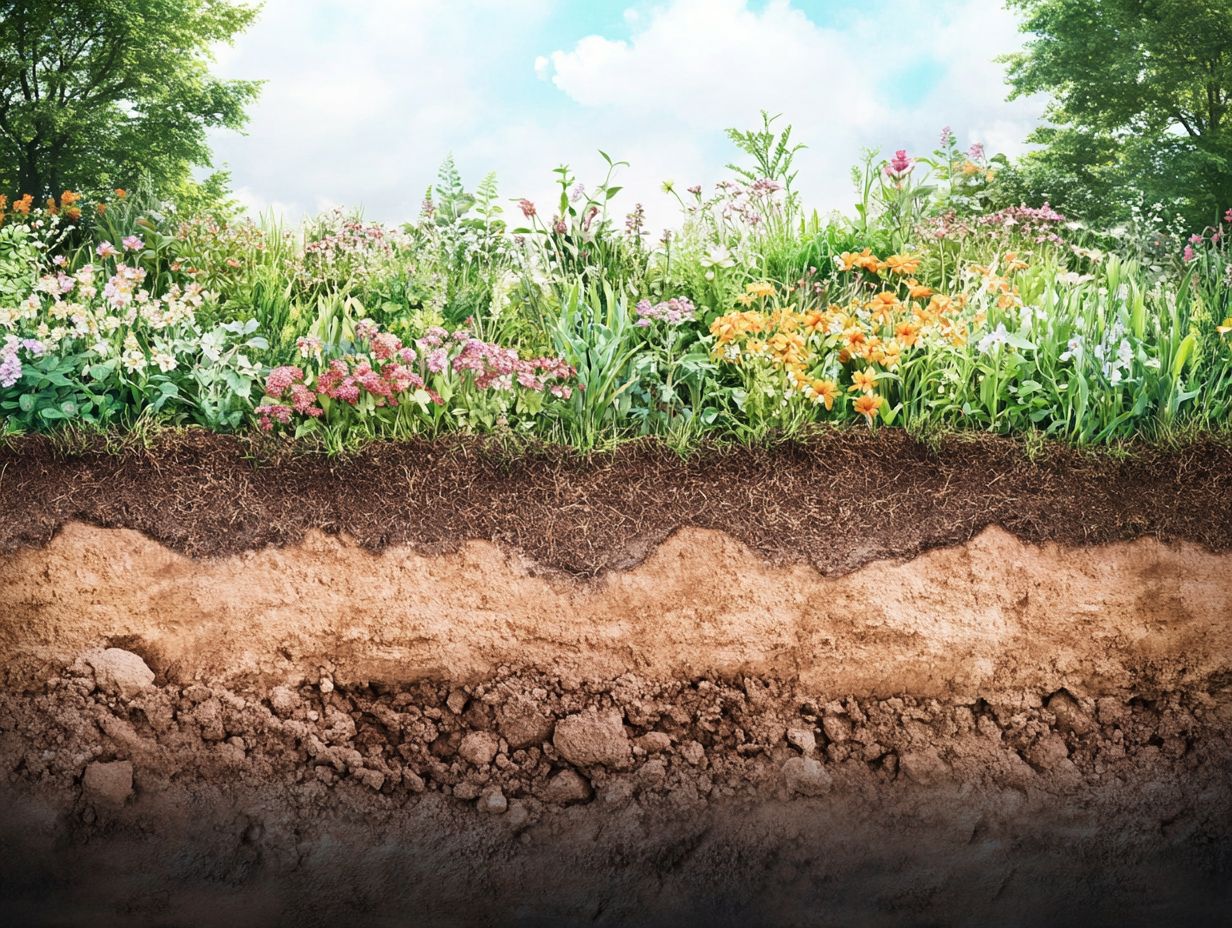
- Soil compaction can limit plant growth by reducing root growth, inhibiting water absorption, and increasing susceptibility to disease.
- Methods for assessing soil compaction include visual inspection, soil moisture measurement, and penetrometer testing.
- To prevent and treat soil compaction, implement proper soil management practices and remediation techniques, especially in agriculture where it can significantly impact crop yield and quality.
What is Soil Compaction?
Understanding soil compaction is essential for maintaining optimal soil health and boosting crop production. Compacted soil can lead to significant yield losses and negatively impact the ecosystem.
Compaction occurs when soil particles are compressed together, leading to increased bulk density (the weight of soil in a given volume), reduced pore space (the tiny gaps in the soil that hold air and water), and a compromised soil structure. All of these factors can greatly affect your agricultural practices.
This issue can arise from various factors, including heavy agricultural machinery, excessive tillage, and a lack of organic matter. These disrupt the delicate balance of tiny living things in the soil that help plants grow.
Definition and Causes
Soil compaction is the process where soil particles are pressed tightly together. This leads to increased bulk density and reduced pore space, significantly affecting the soil’s ability to support plant growth.
Several factors contribute to this issue, with the weight of agricultural tractors being a key player. In areas like Wisconsin and Iowa, heavy machinery, particularly large tractors, can exert considerable pressure on the soil, effectively compressing it. Tillage practices can worsen the situation; conventional tillage methods can lead to heightened compaction in finer soil types due to repeated disturbances. The traffic from farm vehicles during planting or harvesting seasons further compounds the problem.
For example, clay soils tend to experience more severe compaction compared to sandy soils because of their inherent properties. This illustrates how geography and soil type interact to influence compaction levels in agricultural systems.
Effects of Soil Compaction on Plants
Soil compaction significantly impacts your plants, particularly regarding root growth, crop yields, and overall soil health. This hinders the development of robust root systems, leading to yield losses and heightened nitrogen depletion under various moisture conditions.
The consequences can be quite detrimental, ultimately affecting the vitality of your garden or farm.
Reduced Root Growth and Nutrient Uptake
Reduced root growth and limited nutrient uptake are significant consequences of soil compaction. Compacted soil restricts root systems from effectively penetrating and accessing vital nutrients and water.
This situation stunts crop growth and severely diminishes both overall yields and quality. A healthy soil structure is essential for allowing roots to expand and tap into the moisture and minerals needed for vibrant plant development. For example, crops like corn and soybeans are particularly susceptible to the effects of compacted soil, resulting in shallow root systems that struggle to meet the plants’ demands during critical growth phases.
Furthermore, a deficiency in organic matter amplifies these challenges, as organic matter plays a key role in maintaining soil structure, promoting beneficial microbial activity, and enhancing water retention each of which is crucial for robust growth and productivity.
Start implementing these strategies today for a healthier, more productive farm!
Inhibited Water Absorption
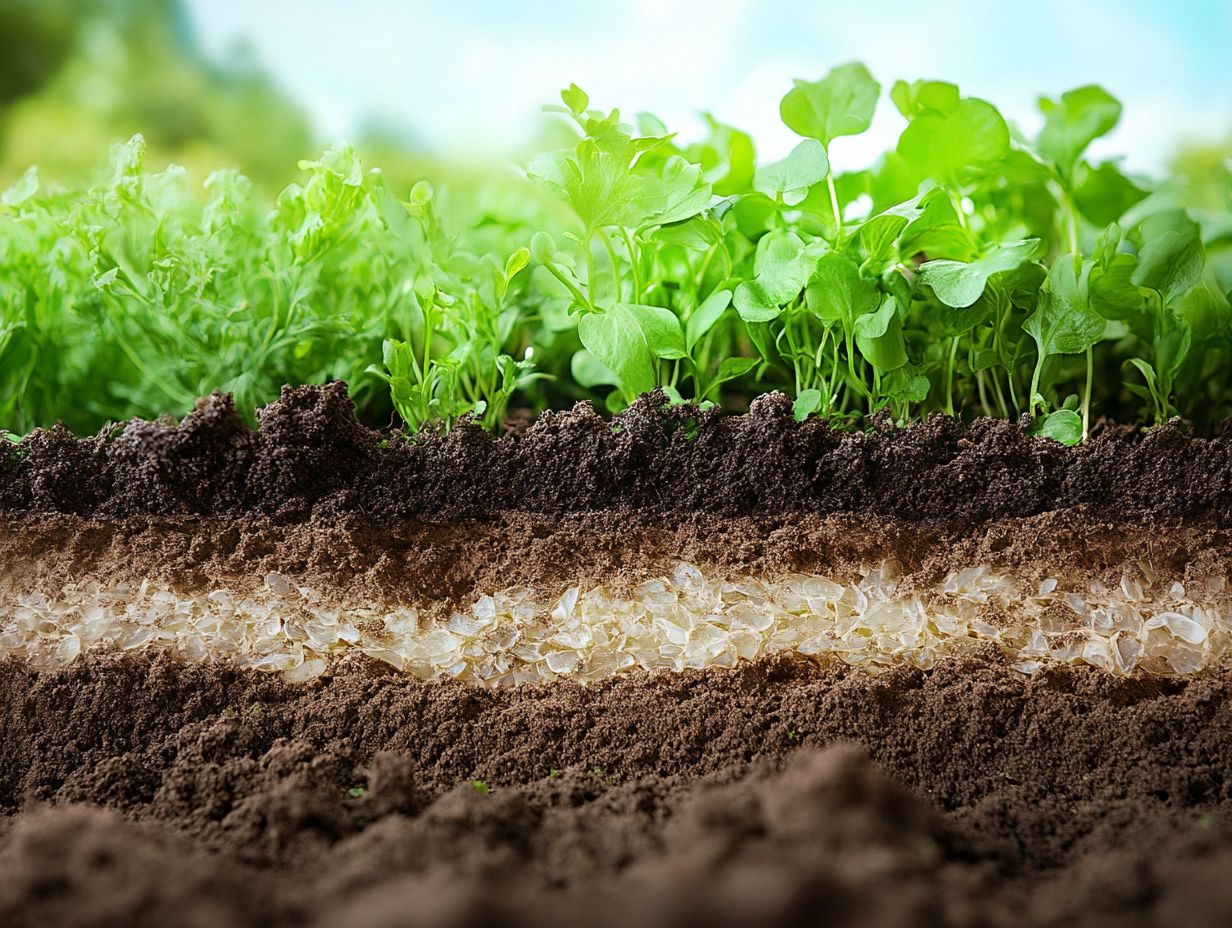
Soil compaction leads to significant agricultural challenges. It limits the soil’s ability to retain and transmit water.
Your crops may struggle with inadequate moisture, which can stunt their growth and potential yield. This highlights the urgent need for effective irrigation practices, especially when water availability is unpredictable.
Poor soil health exacerbates these issues. Compacted layers hinder water movement, root penetration, and nutrient flow.
Implementing strategies such as subsoiling, a method to break up compacted soil, can alleviate compaction and restore the soil’s structure.
These treatments enhance drainage and water infiltration, fostering a more sustainable environment for your crops to thrive.
Increased Susceptibility to Disease
Your plants’ increased vulnerability to diseases can often be traced back to soil compaction. This disruption affects the health of essential soil organisms.
When soil becomes compacted, the movement of air and water is restricted. Beneficial microbes and invertebrates are deprived of the resources they need to thrive.
This creates a perfect storm for harmful pathogens, overwhelming your plants weakened defenses.
Bacteria and fungi are vital for nutrient cycling and disease suppression, while earthworms improve soil structure and aeration. Nurturing a diverse and active soil biota is crucial for reducing disease risk.
Maintaining optimal soil structure through practices such as crop rotation, reduced tillage, and organic amendments is essential for resilient plant health.
Identifying and Measuring Soil Compaction
Identifying and measuring soil compaction is vital for effective soil management. Understanding the weight of soil in a given space allows you to implement the right agricultural practices.
Methods for Assessing Soil Compaction
You have several methods for assessing soil compaction, focusing on techniques that highlight bulk density and soil quality analysis.
One widely used method is core sampling, where cylindrical soil samples are extracted to measure density accurately. While this technique offers precise assessments, it can be labor-intensive and disrupt soil structure.
Another option is employing penetrometers, which measure resistance as they penetrate the soil, giving real-time data on compaction levels. Keep in mind that readings can be influenced by soil moisture and texture.
Visual inspections, though less quantitative, help identify surface-level problems and serve as a useful preliminary evaluation method.
Understanding soil compaction through these assessments boosts your crop yields and helps you make informed decisions about tillage practices, irrigation, and nutrient management.
Preventing and Treating Soil Compaction
Preventing and managing soil compaction is critical for achieving sustainable agriculture today. By avoiding compaction and utilizing effective remediation techniques, you can significantly improve soil health and boost crop production.
Best Practices for Soil Management
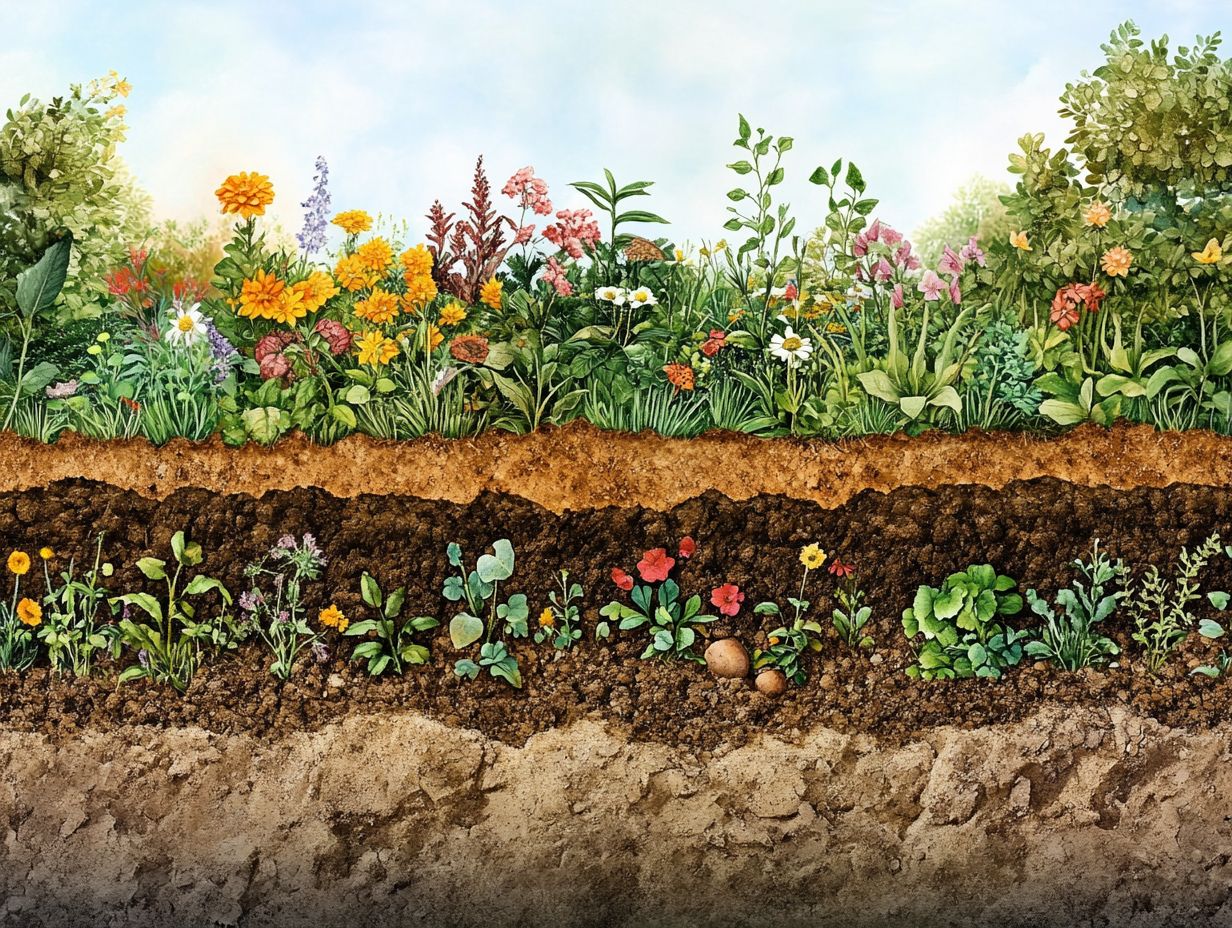
Implementing best practices for soil management dramatically reduces soil compaction. This approach paves the way for sustainable agricultural systems.
By embracing techniques like no-till farming and incorporating cover crops, you can easily cultivate a thriving ecosystem! Meticulously managing traffic patterns enhances soil structure and boosts organic matter.
Improved nutrient retention and water infiltration are direct results of these practices. Over time, this comprehensive approach leads to healthier soil.
Healthier soil enhances crop yields and contributes to the overall sustainability of your farm. Start adopting these strategies today to ensure a prosperous future for yourself and the food systems you support!
Remediation Techniques
Remediation techniques, like a method called subsoiling, significantly alleviate soil compaction. Incorporating organic matter enhances soil structure and promotes impressive crop yields.
These methods improve the soil’s capacity to retain essential nutrients and water, both critical for robust plant growth. Take subsoiling, for example; it loosens compacted layers beneath the surface, allowing roots to extend deeper and access vital resources.
Aeration is another effective practice. By creating small holes in the soil, it boosts air exchange and improves water infiltration, further mitigating compaction effects.
When you topdress with organic matter, you enrich the soil and stimulate microbial activity. This fosters a more resilient ecosystem.
Altogether, these techniques play a pivotal role in restoring soil health and functionality. They create a strong foundation for sustainable agricultural practices.
Impact of Soil Compaction on Agricultural Practices
The effect of soil compaction on agricultural practices is significant. It directly impacts your crop yield, soil quality, and the sustainability of your farming systems.
Understanding this relationship is crucial for optimizing your agricultural outcomes. It ensures long-term viability in your operations.
Effects on Crop Yield and Quality
Soil compaction profoundly impacts both crop yield and quality. This leads to significant yield losses that can severely affect agricultural systems.
Compaction hinders root development, restricts water infiltration, and limits access to essential nutrients. This poses particular challenges for staple crops such as corn, wheat, and soybeans.
Research has shown that, in severe cases, soil compaction can reduce corn yields by up to 20%. This results in losses that can amount to several hundred dollars per acre.
For wheat farming, the consequences are equally alarming; reports indicate that compaction can decrease production by 15% or more, dramatically impacting profitability. These statistics highlight the crucial connection between soil health and crop quality.
Emphasizing the need for you to adopt best practices that alleviate compaction effects is essential. This helps preserve your yield potential.
Strategies for Mitigating Soil Compaction in Agriculture
Implementing effective strategies to mitigate soil compaction is crucial for your sustainable agriculture efforts. These practices can greatly enhance soil health and boost agricultural productivity.
By exploring methods like no-till farming, you can significantly reduce soil disturbance. This allows natural processes to thrive.
Minimizing traffic on your fields helps decrease the mechanical pressure that often leads to compaction. This ensures better air and water infiltration.
Increasing organic matter content through cover cropping and mulching improves soil fertility. It also nurtures a vibrant ecosystem that supports beneficial microorganisms.
By combining these approaches, you create a more resilient soil structure. Ultimately, this contributes to the long-term sustainability and productivity of your agricultural practices.
Frequently Asked Questions

1. What is soil compaction and how does it affect plants, including root systems?
Soil compaction happens when soil particles are pressed together. This reduces space for air, water, and nutrients, making it tough for roots to grow.
2. What are the signs of soil compaction in a garden or farm?
Look out for signs of soil compaction. These include hard soil, standing water, and difficulty planting.
3. How does soil compaction impact the health of plants?
Compacted soil harms plants. It limits oxygen, water, and nutrient uptake, stunting root growth.
4. What are some factors that contribute to soil compaction?
Heavy foot traffic and machinery contribute to soil compaction. Excessive tillage and not letting soil rest also play a role.
5. How can soil compaction be prevented?
To prevent soil compaction, avoid heavy machinery on wet soil. Rotate crops and use mulch to protect the soil.
6. Can soil compaction be reversed?
Soil compaction can sometimes be reversed through soil aeration. This means creating holes in the soil for better movement of air and water.

